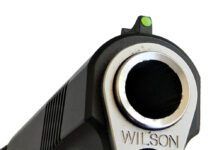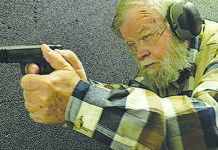Any mass-produced product, no matter how technically advanced, will have manufacturing tolerances that will dictate a variation in the dimensions of the parts. Rifles are not exempt from this, but it is inarguable that with the increasing use of computer controlled manufacturing machines, today’s factory rifles have reduced these tolerances dramatically. Enough, it would seem, that the accuracy goals of a “tuned” rifle from a couple of generations ago are generally close to the minimum out-of-the-box standard today. However, while we may be getting closer, perfection is still elusive.
Dimension variations in bedding, which is the relationship between the metal and the stock of a rifle, particularly around the action, can be critical to the performance of a bolt-action rifle. Even a small variation in dimension can affect the accuracy if it is in a critical location. With the “drop-in” design of most factory-installed stocks, exact bedding is compromised for the sake of affordability and rapid manufacturing. In spite of that, today’s rifles still shoot amazingly well. That said, as good as they are, almost any factory rifle will shoot better with improvements in the stock bedding.
Rebedding a rifle is usually the single most important change a shooter can make to improve accuracy. It’s easily done in a home shop with a minimum of tools and by anybody handy enough to work with a screwdriver without drawing blood.
So-called “glass bedding” when done properly, provides a bedding platform that is so tight to the action that often you can see machine marks from the metal mirrored in the bedding material. Properly done, glass bedding (actually, it’s usually epoxy these days rather than fiberglass and resin) will provide a bedding foundation that not even the most skilled old-world craftsman could duplicate with wood to metal bedding. But there are a few problems with using just glass bedding on some stock, regardless if it is wood or synthetic.
One problem that is inherent with wood stocks is that wood will compress. When you glass bed the stock without pillar bedding, the action screws are putting constant pressure on the wood material of the stock. As the cells in the wood compress under that pressure, the tension of the action screws can change, affecting accuracy.
This is also true with some synthetic stocks, particularly the less expensive injection molded styles usually found on factory rifles. The plastic may not compress, but it can be malleable enough to move under pressure, causing the same end result.
For more advice and insight on firearms and gunsmithing, purchase Gunsmithing Made Easy by Bryce M. Towsley from Gun Tests.





























